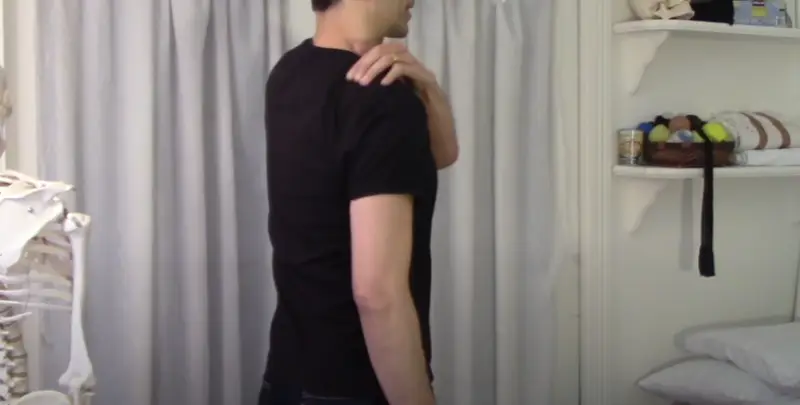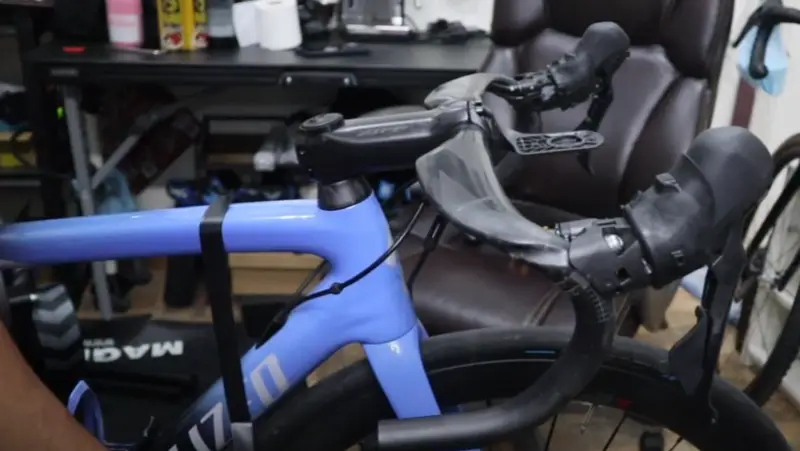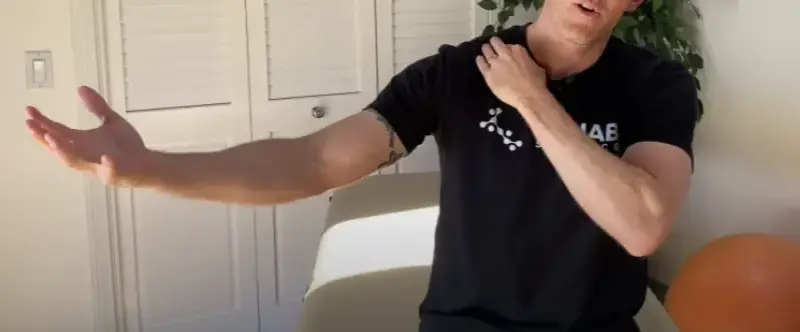An arm beating like a heart might frustrate you, but you may not pay much attention to it, especially if it only occurs occasionally. However, ignoring it is not a good idea since it is often a warning signal of a bigger problem in the arm. It’s essential to pay attention to these signs, especially for cyclists who rely on their arms for balance and control.
Your arm beating like a heart while cycling can be because of muscle fatigue or overuse, muscle cramps or spasms, causing rhythmic muscle twitches. This sensation might also result from poor circulation or nerve compression in your arm. Holding the handlebars too tightly or improper bike setup can exacerbate these issues, which may also result from poor posture and repetitive strain.
In this blog, we’ll explore the reasons behind your arm beating like a heart and, of course, ways to manage it.
Why Is My Arm Beating Like A Heart: 4 Sources

You’ll get many health benefits from cycling, but experiencing unusual sensations like your arm beating like a heart can be worrying. There are several potential reasons this phenomenon might occur, ranging from muscle spasms to nerve irritation. Let’s delve into each cause:
Muscle Spasms
A muscle spasm, or a cramp, can happen during or after intense physical activity, like cycling. The contractions can be painful and lead to sensations akin to your arm pulsating like a heartbeat. Hydration, electrolyte imbalances, and fatigue are all triggers for muscle spasms. Stay hydrated, maintain proper electrolyte levels, and incorporate stretching exercises into your post-cycling routine to ease this issue.
Neck Issues
Neck issues, such as muscle strain or cervical spine problems, can radiate discomfort to other body parts, including the arms. Cycling posture, especially if it involves leaning forward for long periods, can cause neck pain. Proper bike fit, regular breaks to stretch and adjust posture, and neck-strengthening exercises can help mitigate these issues.
Fatigue
Intense cycling sessions can induce fatigue in various muscle groups, including arms. When your muscles are exhausted, they may exhibit abnormal sensations like throbbing or pulsating. Adequate rest between rides, balanced nutrition to support muscle recovery, and gradual progression in cycling intensity can prevent excessive fatigue and its associated symptoms.
Dehydration
Dehydration is a common concern among cyclists, particularly during longer rides or in hot weather. Lack of fluids can cause electrolyte imbalances, muscle cramps, and increased heart rate, which might manifest as your arm feels pulsating. Drinking water before, during, and after cycling and consuming electrolyte-rich fluids or snacks is crucial to maintaining hydration.
Overexertion
Pushing yourself beyond your physical limits while cycling can result in overexertion, which can cause muscle fatigue and potential spasms in various body parts, including the arms. To prevent overexertion-related issues, it’s essential to listen to your body’s signals, avoid sudden increases in intensity or duration, and gradually build up your cycling stamina.
Nerve Irritation
Nerve irritation, often stemming from compression or inflammation at the shoulder or neck, can create abnormal arm sensations. Cycling posture, repetitive movements, or underlying conditions like cervical radiculopathy can contribute to nerve-related discomfort. Seeking guidance from a healthcare provider, incorporating nerve glide exercises, and ensuring proper bike fit is crucial in managing nerve irritation.
Poor Bike Fit

A poorly adjusted bike setup, including handlebar height, saddle position, and overall bike geometry, can place undue stress on different body parts, leading to discomfort and abnormal sensations post-cycling. An improper bike fit can exacerbate neck issues, muscle fatigue, and nerve irritation, ultimately causing your arm to feel pulsating. Consulting a professional bike fitter to optimize your bike ergonomics according to your body measurements and cycling goals can ease these issues.
Management Tips For Arm Beating Like A Heart
If you’re experiencing arm throbbing sensations akin to a bounding pulse, there are several management tips you can consider:
Avoid Over-Training
Over-training is common among cyclists, leading to fatigue, muscle soreness, and arm beating. To prevent this, follow these tips:
- Listen to Your Body: Pay attention to signs of overuse, such as persistent pain or fatigue.
- Follow a Balanced Training Plan: Incorporate rest days and vary your training intensity.
- Gradual Progression: accumulate your mileage and intensity to allow your body to adapt.
Ensure Bike Comfort and Proper Setup
A poorly set-up bike can cause significant discomfort and lead to arm beating. Here’s how to ensure your bike is
correctly set up:
- Correct Frame Size: Make sure your bike frame is the right size for your body.
- Handlebar Position: Set the handlebars to prevent excessive strain on your arms.
- Saddle Position: Ensure the saddle is at the right height and tilt to support a comfortable riding posture.
Use Fat Gripz
Fat Gripz are thick, rubber grips that attach to handlebars, helping to reduce arm fatigue by distributing pressure more evenly. Here’s why they are beneficial:
- Reduced Arm Strain: Fat Gripz minimizes the strain on your forearms and hands by increasing the diameter of the handlebar grip.
- Enhanced Grip Strength: They help build grip strength, reducing the likelihood of arm fatigue during long rides.
Finger Extension Exercises
Strengthening your fingers can help manage arm beating by improving overall hand endurance. Include these exercises in your routine:
- Rubber Band Extensions: Place a rubber band around your fingers and thumb, and extend your fingers outward against the resistance.
- Hand Squeezes: Use a stress ball or hand gripper to strengthen your hand and finger muscles.
Strengthen Your Hands
Strong hands are crucial for maintaining a firm yet relaxed grip on the handlebars. Here are some exercises to try:
- Wrist Curls: To strengthen your wrists and arms, perform wrist curls, both forward and reverse, using light dumbbells.
- Farmer’s Walk: Hold heavy weights in both hands and walk for a distance to improve grip strength and endurance.
Practice Hanging Exercises
Hanging exercises can help strengthen your arms and improve your grip endurance. Incorporate these exercises into your training:
- Dead Hangs: Drop down from a pull-up bar for an extended period of time to build grip and arm strength.
- Active Hangs: Engage your shoulders and back while hanging to increase the difficulty and strengthen your upper body.
Regular Hand Position Changes
Changing your hand position regularly will prevent arm fatigue and beating. Here’s how:
- Alternate Hand Positions: Move your hands between the original positions on the handlebars frequently.
- Use Drop Bars: If you have drop handlebars, use the drops, hoods, and tops alternately to vary the pressure on your arms.
Elbows Up, Gripping with Your Legs
Adopting the correct body posture can significantly reduce arm fatigue. Focus on these aspects:
- Elbows Up: Keeping your elbows slightly bent and up can reduce the strain on your arms and shoulders.
- Grip with Your Legs: Use your legs and core to stabilize your body, reducing the need to grip the handlebars tightly.
Focusing on Breathing
Proper breathing techniques can help manage fatigue and maintain endurance. Here’s how to focus on your breathing:
- Deep Breathing: Practice deep, diaphragmatic breathing to ensure a steady oxygen supply to your muscles.
- Rhythmic Breathing: Sync your breathing with your pedaling rhythm to maintain a calm pace.
Relaxing Your Grip on the Handlebars

A relaxed grip can prevent unnecessary tension in your arms. Follow these tips:
- Light Touch: Hold the handlebars lightly, avoiding a death grip that can lead to fatigue.
- Flexibility: Keep your fingers and wrists flexible to absorb shocks and vibrations from the road.
Stay Hydrated
Hydration is crucial in maintaining muscle function and preventing fatigue. Here’s how to stay hydrated:
- Regular Sips: Drink small amounts of water regularly throughout your ride.
- Electrolytes: Use sports drinks or electrolyte tablets to replace sweat-loss salts.
Stretching Routine
A proper stretching routine can prevent muscle tightness and improve flexibility. Include these stretches:
- Forearm Stretches: Stretch your forearms by extending your arm and gently pulling back on your fingers.
- Wrist Flexor Stretch: Raise your arm, palm facing down, then pull your fingers back gently.
- Shoulder Stretches: Perform shoulder stretches to relieve tension in your upper body.
Conclusion
The above explains why your arm may beat like a heart during or after cycling. While these sensations can be alarming, remember most of these causes are related to overexertion, inadequate hydration, poor bike setup, or underlying physical issues, all of which can be managed with a bit of attention and care.
Several strategies can help you manage this baffling issue, such as adopting a balanced training plan, ensuring bike comfort and proper setup, investing in Fat Gripz, or embarking on a regular stretching routine. So, let your arm’s impromptu drumming session damper your cycling adventures. With some mindful practices, you can ride comfortably, keeping your arm beating at bay.
FAQs
Should I Be Concerned If My Arm Is Beating Like A Heart?
Occasional throbbing may not be a cause for concern, but seek medical advice if it’s accompanied by pain, numbness, or other symptoms. Persistent throbbing can show issues like nerve compression or poor circulation.
What can I do at home to relieve a throbbing arm?
To relieve a throbbing arm at home, try resting and elevating the arm, applying a cold or warm compress, and gently massaging the area. If the sensation continues, consult with a healthcare professional for further guidance.


